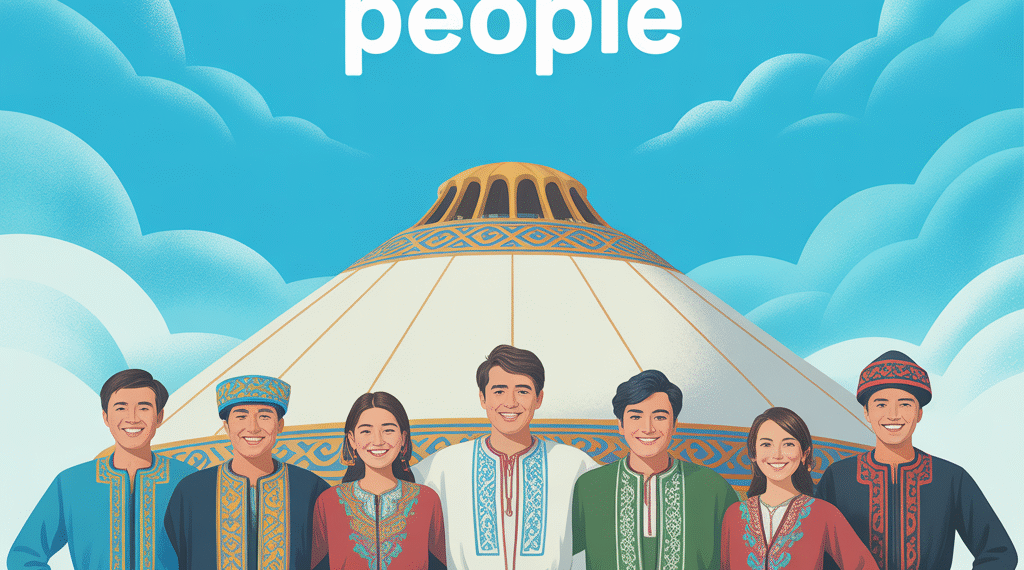REVIEW
Sadvokassova Akbota
Tor Vergata University of Rome, Rome, Italy
Tursynbay Aspan
Maqsut Narikbayev University, Astana, Kazakhstan
This article is part of a special issue titled Bridging Power and Knowledge: Addressing Global Imbalances in Knowledge Systems for Sustainable Futures.
PLAIN-LANGUAGE SUMMARY
WATCH A SUMMARY OF THE ARTICLE
LISTEN TO THE PODCAST
Abstract
Shezhire is the voice of our ancestors, a reflection of their wisdom honed over centuries. Today, in an era of change, it can become key to fostering harmony between humanity and nature. Every story in the shezhire teaches us that if we destroy nature, our lives will be destroyed. This knowledge remains relevant today, as global resources face increasing threats. Shezhire (genealogies) of the Kazakh people are not only a system of tribal ties but also a unique cultural, social, and historical phenomenon that has shaped the identity and structure of Kazakh society for centuries. In this article, Shezhire is viewed not only as a family history but also as a critical source of ecological, migratory, and anthropological data relevant to contemporary discourse on sustainable development. The study substantiates this claim using a combined approach that integrates archival analysis, ethnographic fieldwork, and a nationwide sociological survey involving 1,000 respondents across five regions of Kazakhstan. These methods provide a comprehensive understanding of how Shezhire records reflect ecological adaptation, migratory processes, and genetic diversity, which together contribute to the resilience of communities in changing conditions. Thus, Shezhire is not only a chronicle of the past but also a cultural bridge to the future. By preserving and reinterpreting the legacies of our ancestors through interdisciplinary research, we contribute to building a sustainable world for future generations.
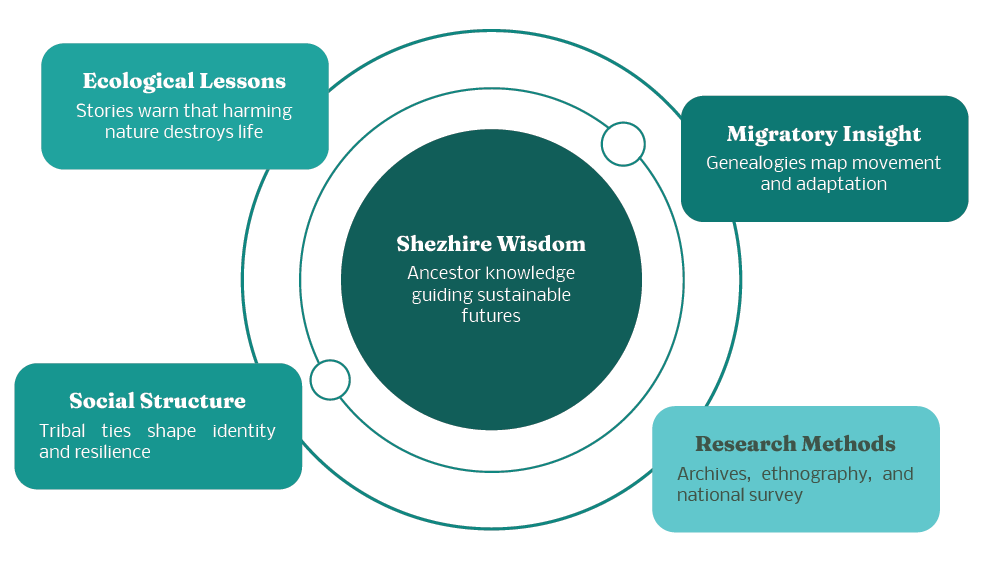
Keywords: shezhire, Kazakh genealogies, traditional ecological knowledge, sustainable development, migration, cultural heritage.
Introduction
Shezhire, or genealogies, are one of the most important traditions in the culture and self-awareness of the Kazakh people. This is not merely a list of ancestors, but a holistic system of knowledge that combines historical, ecological, and social aspects (Jessen et al., 2022). Knowing one’s genealogy up to the seventh generation was considered a sacred duty for every Kazakh and played a key role in regulating social ties, preserving ancestral memory, forming cultural identity, and adapting to natural conditions (Guirkinger & Aldashev, 2016). Within local society, shezhire served as a living archive, recording not only names and dates but also migration routes, territorial features, and ecological knowledge of the landscape and its resources (Shakirova et al., 2023).
Today, in the context of globalization and the erosion of traditional knowledge (Tezekbay & Tolessin, 2024), shezhire is acquiring new meaning as a cultural and ecological archive. It can be considered a valuable source of information on migrations and the adaptation strategies of the Kazakh people over centuries. To this day, references to ancestral movements, choices of nomadic lands, and marriages represent relevant environmental and social lessons, reflecting sustainable practices of natural resource management and the maintenance of biodiversity.
In this article, shezhire is considered not only as a historical phenomenon but also as a model for studying sustainable development. For this purpose, an analysis of the historical and cultural origins of shezhire was conducted, revealing its functions within the social structure of Kazakh society and its role in the formation of cultural identity. The structure and geography of shezhire are also analyzed, including the system of division into zhuzes and clans (Olzhbaekova, 2025), territorial distribution, and migration routes. Based on a review of ethnographic and genetic studies, as well as data obtained during a sociological survey conducted among 1,000 respondents from five regions of Kazakhstan, anthropological and genetic features of some Kazakh clans are highlighted. This allows us to discuss how the combination of these characteristics has historically shaped the genetic diversity of Kazakh society and can be used in modern scientific and educational contexts of sustainable development. It also allows us to analyze the potential of shezhire as a tool for the formation of educational and scientific programs aimed at preserving traditional knowledge and integrating it into modern strategies for sustainable development (Corbett, 2025). Thus, the article aims to comprehensively understand shezhire as a multifunctional cultural and ecological archive that combines traditional knowledge and modern scientific approaches, making it a relevant resource for shaping a sustainable future.
THEORETICAL FRAMEWORK AND LITERATURE REVIEW
Origins and Functions of Shezhire
Origin of the Concept of “Shezhire”
Shezhire (Kazakh for genealogy/history, from Arabic “shajara” meaning tree) is a unique Kazakh system of oral and written knowledge, functioning as a comprehensive archive of historical, cultural, and environmental wisdom passed through generations (see Figure 1). It covers family ties, natural resource management, survival in extreme conditions, environmental harmony, and social norms. This aligns with UNESCO’s recognition of practices like traditional yurt-making (one of Kazakhstan’s 14 Intangible Cultural Heritage elements as of 2024), highlighting sustainable resource management using ‘natural and renewable raw materials’ (UNESCO, 2024).
Research demonstrates Central Asian nomadic pastoralists successfully use traditional forecasting for climate change adaptation (Herrera, 2023) and precipitation management. Their centuries-old sophisticated ecological ideologies, rooted in human-nature coexistence, exemplify advanced environmental management (Jessen et al., 2022).
Shezhire was first recorded in Kazakh culture in written form during the Golden Horde era (13th-15th centuries) and gained widespread recognition (15th-18th centuries) during the Kazakh Khanate’s formation, becoming integral to its political structure, social status, territorial rights, and diplomatic relations (Guirkinger & Aldashev, 2016). Kazakh zhyrau (epic poets and storytellers) like Ketbuga and Asan Kaigy orally transmitted shezhire, preserving the memory of khans, batyrs, and historical events. Written versions appeared in medieval historians’ works, most notably Abulgazy Bakhodur Khan’s “Shezhire of the Turks” (17th century), which described Kazakh genealogies within the broader Turkic community.
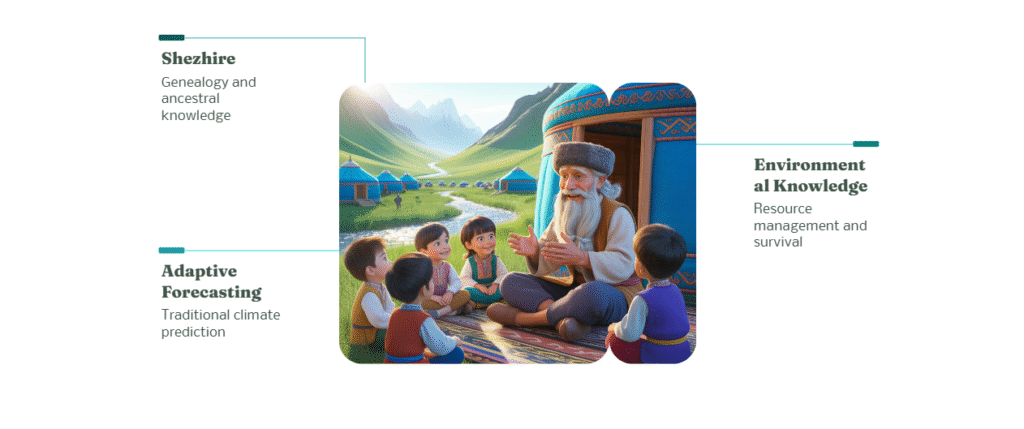
Figure 1. Shezhire as a Comprehensive Knowledge System
Academic research on traditional knowledge systems in Central Asia remains limited. A systematic review found only 52 publications on climate change adaptation in Central Asian mountains (Saidaliyeva, 2024), underscoring the urgent need for more comprehensive studies of systems like shezhire. Shezhire reflected family history alongside geographical, ecological, and social contexts. For example, each family branch linked to specific regions: the Argyns in the Middle Zhuz to the central and northern steppes, the Adai in the Younger Zhuz to Western Kazakhstan’s desert regions, and most of the Senior Zhuz to Southern Kazakhstan (Olzhbaekova, 2025).
Kazakh Migrations & Ecological Adaptations Timeline
This timeline illustrates key periods in Kazakh history, highlighting significant migrations and ecological adaptations that shaped their culture and sustainability practices (see Figure 2).
13th-15th Century: Golden Horde Era
- Formation of early Kazakh identity
- Development of shezhire documentation system
- Adaptation to steppe environments and seasonal migrations (Ventresca Miller et al., 2020)
15th-16th Century: Kazakh Khanate Formation
- Unification under Janibek and Kerei (1465-1466)
- Establishment of three zhuz system (Senior, Middle, Junior)
- Territorial organization based on ecological zones
16th-17th Century: Territorial Expansion
- Clan migrations following seasonal pastures (Ulambayar, 2023)
- Development of water management systems
- Adaptation to diverse landscapes (steppes, deserts, mountains)
18th Century: Climate Adaptation
- Argyn clan migration northward due to southern desertification (Davaadalai et al., 2024)
- Documentation of drought responses in shezhire
- Development of flexible nomadic strategies (Tugjamba et al., 2023)
19th-20th Century: Colonial Pressures
- Adaptation to Russian settlement policies
- Preservation of traditional knowledge systems (Tegizbekova, 2018)
- Integration of new agricultural practices
21st Century: Modern Applications
- Revival of shezhire knowledge for sustainability (Acharya & Prakash, 2025)
- Integration with climate science and conservation (Corbett, 2025)
- UNESCO recognition of traditional practices (UNESCO, 2014)
Figure 2. Kazakh Migrations & Ecological Adaptations Timeline
Social Functions of the Shezhire
The Shezhire had many functions that went beyond simply recording genealogies. It was an important element of the social organization of Kazakh society, in which everything was built around family ties. The Shezhire was the main instrument of self-identification. Every Kazakh knew their genealogy up to the seventh generation, a knowledge considered essential for understanding their role in society. Not knowing one’s origins was perceived as a lack of respect for ancestors and one’s own culture. Kazakh society strictly adhered to the principle of “zheti ata” (seven ancestors). This custom prohibited marriages between descendants related within seven generations, which helped prevent undesirable genetic consequences. The tradition of zheti ata (seven ancestors) was fundamental to Kazakh society, requiring every individual to know their genealogy up to seven generations to prevent marriages within this lineage and maintain genetic health. The Shezhire recorded these lineages to avoid accidental violations of this rule.
The Shezhire system also provided clarity in matters of leadership and social status. For example, contenders for the Khan’s throne had to belong to the Tore clan, which traced its origins back to Genghis Khan. Clans, such as the Naimans, Kipchaks, or Dulats, had their own territories and influence depending on their place in the Shezhire system. This complex social structure represented an open type of stratification where individuals could advance their social position despite the traditionalism of nomadic society. Shezhire served as a basis for the transmission of cultural values, heroic stories, and lessons from the past. Through stories about ancestors, children learned about virtues such as courage, hospitality, and respect for elders. Shezhire also recorded the connection of clans with certain territories, which played a key role in land ownership issues. This allowed for the avoidance of conflicts between clans and ensured harmonious coexistence in the context of a nomadic lifestyle. Even to this day, one can trace a logical connection, as most clans have retained their locations on the modern territory of Kazakhstan.
Thus, Shezhire was not only a genealogical system but also a mechanism for social regulation and the preservation of historical memory (Shakirova et al., 2023). It united the Kazakh people into a single community, creating strong cultural roots that helped nomadic communities survive and thrive. In the following sections, we will explore how Shezhire reflected the geographical and ecological aspects of Kazakh life, and trace its significance in the adaptation and development of society.
Shezhire’s Multifaceted Social Functions
Beyond a mere genealogical record, the Shezhire was an indispensable tool for social organization, self-identification, and cultural preservation within Kazakh society. It provided a framework for legal, social, and cultural norms, intricately weaving personal identity with collective history.
These functions demonstrate the Shezhire’s profound impact on shaping Kazakh societal norms, from individual identity to collective governance, ensuring stability and continuity across centuries of nomadic life (Tezekbay & Tolessin, 2024).
Structure and Geography of Shezhire
The Three Zhuzes: Senior, Middle, and Junior
The Shezhire of the Kazakh people is structured around the system of three zhuzes: Senior (Uly Zhuz), Middle (Orta Zhuz), and Junior (Kishi Zhuz). This unique construction was formed as a result of historical, geographical, and social processes spanning thousands of years. Each zhuz is a confederation of tribes (ru) united by common origin, territory, and leadership traditions. The zhuz system organized Kazakh society into large unions based on kinship ties, providing a basis for governance, conflict resolution, and natural resource management. Within each zhuz, tribes were in turn subdivided into clans and lineages, creating a multi-level hierarchical organization that combined kinship ties with socio-political functions.
Senior Zhuz
The Senior Zhuz occupied the southern regions of modern Kazakhstan, including the territories along the Syr Darya River, Tien Shan, and Zhetysu (Semirechye). The clan groups of the Senior Zhuz, such as the Dulaty, Kanly, Suany, Albany, and Shaprashty, played a key role in the cultural and economic life of the region.
Notably, the clans of the Senior Zhuz were characterized by their proximity to the sedentary civilizations of Central Asia. Situated along key routes of the Silk Road, these territories facilitated active trade and cultural exchange.
Middle Zhuz
The Middle Zhuz occupied the central and northeastern steppes, including the regions of Saryarka, Pavlodar, and East Kazakhstan. Its main clans included Argyn, Kipchak, Naiman, Konyrat, and Kerey. The clans of the Middle Zhuz were renowned for their military and administrative traditions.
They participated in key battles, such as the struggle with the Dzungars, and played an important role in the political system of the Kazakh Khanate.
Junior Zhuz
The Junior Zhuz was located in the western steppes, including the modern Atyrau, Aktobe, and Mangistau regions. Its main clans were Bayuly, Alimuly, and Zhetiru. The Junior Zhuz lived in harsh climatic conditions, where nomadism was more intense. Adapting to these challenging environments and practicing nomadic pastoralism were central to their way of life.
Intra-clan Structures
Within each zhuz, the Shezhire detailed clan ties, creating a complex network of relationships between sub-clans (ata-balasy). This structure ensured social hierarchy and organization. Each large clan was divided into smaller subdivisions. For instance, the Argyns of the Middle Zhuz included sub-clans such as Karakesek, Kanzhygaly, and Temesh. These sub-clans, in turn, could be divided into even smaller groups, each with its own leader (bi or elder). Among the Dulats of the Senior Zhuz, subdivisions like Sary, Shymyr, and Botpay secured their territories depending on natural conditions. The Shezhire was maintained and transmitted under the leadership of elders, who were the keepers of clan memory. They could detail important events and family ties, ensuring the preservation of knowledge about ancestors (Tegizbekova, 2018). Each clan had its own territory, where it lived and roamed. The Naiman clan occupied the eastern regions, rich in pastures and rivers. The Adai clan settled in the desert regions of Western Kazakhstan, developing unique methods of survival in harsh conditions. Clans often differed in cultural traditions, which can be observed, for example, in the ornamentation characteristic of each clan and in local dialects of the Kazakh language. These differences were often reflected in the Shezhire.
Shezhire as a Migration Map
Shezhire recorded the migration routes of Kazakh clans, reflecting their adaptation to natural conditions. From the 7th to the 10th centuries, the ancestors of the Kazakhs, including the Karluks and Kipchaks, migrated from Altai to the steppes along the Syr Darya. These migrations were driven by the search for new pastures and climate change (Genina, 2015). The Argyns and Kipchaks often migrated due to conflicts with neighboring tribes and deteriorating environmental conditions. Migration contributed not only to settlement but also to cultural exchange. For example, the Kipchaks brought their traditions and language, which influenced the formation of the modern Kazakh language. This process exemplifies the inherent resilience of Kazakh communities, which adapted to changing political and economic landscapes by integrating external influences and preserving core elements of their social structure, nomadic economy, and cultural identity. Shezhire also preserved the memory of nomadic routes, which were determined by the availability of water and pastures. For example, the routes of the Adai clan passed along the Caspian Sea, which provided access to water in an arid climate (Ventresca Miller et al., 2020). The structure and geography of the Shezhire reflect the complex system of organization of Kazakh society. The three zhuzes and their clan structures created a balance between local autonomy and national identity. This balance was maintained through traditional governance mechanisms such as councils of elders (biy), inter-clan gatherings, and customs (adat) governing conflict resolution, land use, and marriage alliances (Davaadalai et al., 2024). In addition, shared seasonal migration cycles and coordinated pasture management facilitated cooperation between clans, highlighting the importance of adaptation and human interaction with nature.
Ecology and Anthropology of Shezhire
Ecological Aspects of Shezhire
Shezhire as an ecological archive: integration of knowledge about nature. The Kazakh shezhire, being the foundation of the people’s cultural memory, is not only a genealogical collection but also a unique ecological archive reflecting a deep understanding of the nomadic society’s interaction with its environment. These genealogies included data on the most productive pastures, the seasonality of their use, and migration routes. This made shezhire a practical tool for adapting to changing natural conditions (Herrera, 2023), with migration data observable on the map in Figure 3. This information was primarily recorded and transmitted orally by clan elders, biys, and narrators, who carefully memorized and recited it during general meetings and ritual ceremonies. The continuous recitation of this knowledge from generation to generation strengthened its reliability and accuracy, acting as a living archive essential for survival in the steppe (Jessen et al., 2022).
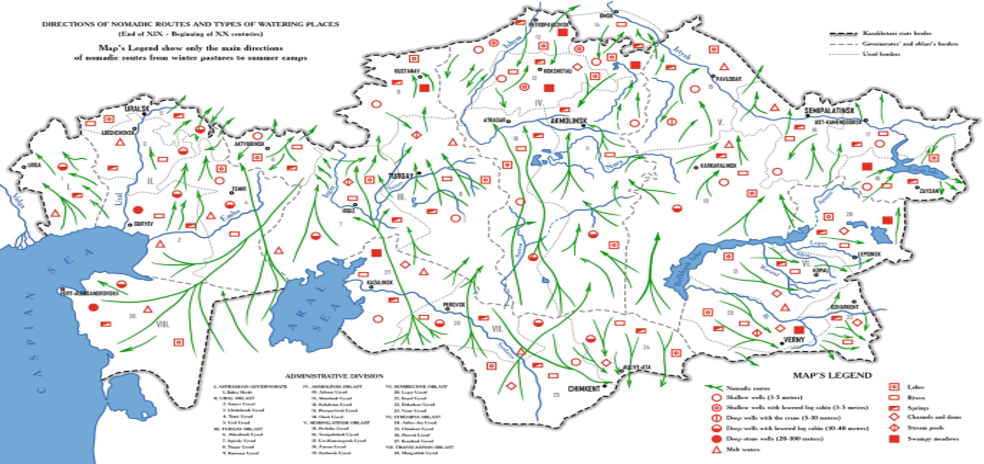
Figure 3. Directions of Nomadic Routes and Types of Watering Places
The shezhire of the Senior Zhuz mentions the territories of Zhetysu, characterized by highly productive pastures. Their use was strictly regulated to prevent land degradation, and such knowledge contributed to the maintenance of ecosystem balance. Oral legends about the Syr Darya and Balkhash, included in the shezhire, conveyed information about safe watering places for livestock. This practice reduced anthropogenic pressure on the environment. The example of the Adai clan from the Younger Zhuz demonstrates how the shezhire served as a tool for adaptation to the harsh conditions of the Mangistau deserts (Tugjamba et al., 2023).
Rational Use of Resources
The Adai people documented information about temporary reservoirs and wells. This allowed them to maintain a livestock economy despite the limited water supply. The shezhire of each clan reflects migrations along the Caspian coast, which provided access to water and food resources, thereby minimizing the risks of ecosystem depletion. The Adai people meticulously documented temporary water bodies, wells, and seasonal camps in shezhire, which allowed them to successfully conduct nomadic pastoralism even with limited water resources. These genealogies of each clan recorded migration routes along the Caspian coast, ensuring sustainable access to water and pastures, and thereby preventing ecosystem degradation. Such traditional knowledge of water use and spatial memory can serve as a valuable source for modern conservation strategies and the rational distribution of water resources in the arid regions of western Kazakhstan (Figure 4).

Figure 4. Ecological zones across Kazakhstan
Climate Change and Its Reflection in the Shezhire
The shezhire recorded the adaptation strategies used by clans in response to climate change (Redvers & Aubrey, 2023). For example, in the 13th-14th centuries, desertification of the southern steppes was observed, which forced the Kipchaks and Argyns from the Middle Zhuz to migrate north to the wetter regions of Saryarka. In the 18th-19th centuries, the clans of the Great Zhuz introduced irrigation methods to the fertile lands along the Syr Darya, contributing to the development of sedentary agriculture.
Environmental Consequences of Industrialization
Soviet collectivization in the 20th century led to the disruption of traditional migration routes documented in the shezhire, disrupting the ecological knowledge of pastoral communities accumulated over centuries. This disruption directly contributed to the acceleration of soil erosion and desertification.In the Younger Zhuz area, particularly in the Aktobe region, biodiversity declined dramatically due to overgrazing and the abandonment of sustainable rotational grazing practices once institutionalized in the shezhire. Recent ecological research confirms significant declines in native plant species and soil fertility associated with these historical changes, highlighting the ecological consequences of the erasure of traditional knowledge systems. This proves once again that shezhire contains enormous potential for studying traditional practices of sustainable nature management. Analysis of genealogies helps, firstly, to restore historical data on migrations, which contributes to the study of climate change, and also to develop strategies for the rational use of pasture ecosystems, taking into account traditional knowledge (Guirkinger & Aldashev, 2016).
Anthropological and Genetic Aspects of Shezhire
Recent research in the field of molecular anthropology demonstrates a striking correlation between the genealogies documented in the Shezhire and the genetic diversity of the Kazakh population, emphasizing its complex historical and geographical origin. According to the data, the most common haplogroups in the Great Zhuz are C2 and R1a, which reflect ancient Turkic and Indo-Iranian migrations. In the Middle Zhuz, a high frequency of haplogroup G is observed, which researchers associate with the migrations of the Kipchaks and their subsequent integration into the Mongol troops. Meanwhile, in the Younger Zhuz, haplogroup J2 stands out, indicating historical contacts with populations from the Caucasus and Caspian regions. Mitochondrial DNA studies show that the maternal lines of different clans trace back to various regions of Eurasia. This genetic diversity corroborates historical evidence of inter-clan marriages and external contacts. These results illustrate how shezhire not only documents social memory but also reflects a deeper biological history.
Physical Anthropological Characteristics of the Clans
Middle Zhuz
The Argyns and Naimans exhibit pronounced Mongoloid features, including a broad skull and high cheekbones, which is associated with their genetic heritage from the nomads of Central Asia.
Great Zhuz
The Suans and Dulats display mixed features, which may be a consequence of their close interaction with sedentary peoples of Central Asia, such as the Sogdians.
Younger Zhuz
The Zhetiru and Alimuls possess Caucasoid features, including a thin nose and deep eye slits, indicating their connection with the Sarmatians and Alans.
Social Regulation and Genetic Health: The Rule of “Zheti Ata”
Shezhire played a central role in maintaining the genetic health of Kazakh communities through the “Zheti Ata” rule, which prohibited marriages between individuals with common ancestors within seven generations (Olzhbaekova, 2025). By effectively preventing consanguineous unions, this system helped to preserve genetic diversity and reduce the prevalence of hereditary diseases. Similar restrictions on kinship-based marriages have been observed in other nomadic societies; for example, the Khoton exogamy rules of Mongolian pastoralists, as well as the clan exogamy of Kyrgyz tribes. Modern research in population genetics confirms that such systems have helped to limit the spread of recessive genetic diseases in small, endogamous populations.
Ethnocultural Parallels and Global Context
The Kazakh system of shezhire has parallels in the genealogies of other nomadic peoples. For instance, the Mongols maintained “Altan tobchi,” a genealogy focusing on the Genghis Khan dynasties (Genina, 2015). Among the Turkic tribes of Central Asia, shezhire recorded tribal unions and political hierarchy. The Kazakh tradition is distinguished by its comprehensive detail, covering not only the political elite but also a wide range of clans, which emphasizes its importance for anthropological and sociological analysis. UNESCO’s recognition of traditional knowledge systems across cultures supports this comparative approach. For instance, traditional yurt-making knowledge shared between Kazakhstan and Kyrgyzstan was jointly inscribed on UNESCO’s Representative List in 2014, demonstrating the cross-cultural value of nomadic heritage.
Despite their cultural significance, traditional knowledge systems in Central Asia face protection challenges. Research indicates that Central Asian states lack specialized regional tools to protect genetic resources and traditional knowledge, with only Kyrgyzstan developing legal frameworks for traditional knowledge protection as of 2018 (Tegizbekova, 2018). This regulatory gap underscores the vulnerability of systems like shezhire.
Shezhire as a Source of Anthropological Data
A comparative analysis of shezhire and archaeological data reveals insights into migrations and cultural contacts. Specifically, the migrations of the Kipchaks (Middle Zhuz) show an overlap with the spread of material culture, such as ceramics and weaponry (Ventresca Miller et al., 2020). Furthermore, genetic studies confirm the significant influence of Iranian and Mongolian migrations, which are also mentioned in the oral traditions of shezhire. The ecological and anthropological aspects of shezhire demonstrate the intricate interrelationship between humans and nature, genetic heritage, and cultural memory. The integration of traditional and scientific knowledge is increasingly recognized as essential for climate adaptation, supporting the relevance of shezhire in contemporary sustainability efforts.
MATERIALS AND METHODS
In preparation for this article, a sociological study was conducted to examine the perception of shezhire in modern society (Olzhbaekova, 2025), its importance for sustainable development, and possible ways of utilizing this cultural heritage in a global context. The study employed a quantitative approach. The sociological survey was administered to the population of Kazakhstan, maintaining regional and age balance. The sample comprised 1,000 respondents, proportionally distributed across regions, age categories, and gender groups based on data from the latest national census (see Figure 5). This sample design ensures the statistical representativeness of the sample relative to the adult population of Kazakhstan, thereby confirming the validity of the results obtained.
Regional Distribution

Figure 5. Regional Distribution of Survey Respondents
Each region was represented by four age categories, with 50 people in each:
Older generation (40 years and older).
Younger group (up to 18 years old).
Youth (18-25 years old).
Working age (25-40 years old).
Survey Design and Data Collection
The survey included a number of questions aimed at obtaining objective data on the perception of shezhire and its potential role in various aspects of sustainable development. For a more accurate analysis, the questions were grouped into three thematic blocks:
This thematic grouping allowed us to analyze the answers not only to individual questions but also in broader cultural, environmental, and educational contexts. The survey was conducted using the Google Forms platform, which ensured the convenience of data collection and minimized geographical barriers. The link to the survey was distributed through social networks, educational institutions, and public organizations. Additionally, local surveys were conducted in rural and urban areas to account for regional characteristics. The collected data were categorized by region, age group, and thematic block. This made it possible to identify regional differences in the perception of shezhire, as well as to analyze how age and level of awareness affect attitudes toward this phenomenon.
Ethical considerations: Participation was voluntary and anonymous; consent was obtained from all respondents (and parental/guardian consent for minors). No identifying data were collected.
RESULTS
Shezhire as a Tool for Sustainable Development in the Modern World
Shezhire, as a unique genealogical and cultural tradition of the Kazakh people, is a powerful tool for preserving historical memory, environmental knowledge, and social order. This system, passed down through generations in oral and written forms, not only documents the origins and connections between clans but also contains profound information about human interaction with the natural environment, migration patterns, principles of social structure, and sustainable practices. Today, shezhire has the potential to be integrated into global sustainable development strategies, especially in the context of growing interest in traditional knowledge as a resource for adaptation to modern challenges (see Figure 6).

Figure 6. Shezhire’s Role in Sustainable Development
Historical and Cultural Significance of Shezhire and Sustainability
Shezhire, developed from a nomadic lifestyle demanding high environmental and social adaptation, was crucial for sustainable resource management (pastures, water, migration routes). For instance, Kazakh clans like the Dulats of the Senior Zhuz used it to transmit cultural heritage detailing Zhetysu’s fertile lands, seasonal availability, and acceptable use rates, fostering harmony with nature. Beyond genealogy, shezhire regulated inter-clan relations, preventing conflicts and maintaining cohesion. The Zheti Ata principle (prohibiting marriages up to the seventh generation), for example, prevented genetic diseases and strengthened clan ties (Redvers & Aubrey, 2023).
Shezhire and Ecology: Lessons for Sustainable Nature Management
Shezhire traditions offer rich nature management knowledge for modern environmental strategies (see Figure 7). They detail pasture rotation, crucial for restoration, degradation prevention, and combating steppe desertification (Davaadalai et al., 2024). Modern research and 1980s-1990s oral histories confirm traditional migration routes, such as the Kipchak clan’s seasonal movement from lower Ishim (Yesil) River to Ulutau (Ulytau) foothills, align with optimal biodiversity zones; integrating this into ecosystem restoration effectively combats land degradation. Shezhire also records water source locations, seasonal availability, and acceptable use rates, exemplified by the Alshyn clan’s traditional use of Mangistau groundwater, data valuable for modern water management amidst climate change.

Figure 7: Shezhire traditions in nature management for sustainable environmental strategies
Climate Adaptation
Studying the migration routes of clans recorded in the shezhire reveals how nomadic communities adapted to climate change. A historical example is the migration of the Argyn clan from arid regions to the north in the 18th century, which is associated with climate change and the desertification of the southern steppes (Davaadalai et al., 2024). This demonstrates the flexibility of traditional systems in responding to climate challenges. This adaptive capacity is supported by broader research on nomadic climate adaptation. Studies demonstrate that nomadic pastoralists have successfully used traditional forecasting methods to predict and observe changes in rainfall variability across multiple regions, with documented cases in Africa and Asia showing effective precipitation management strategies (Tugjamba et al., 2023). Contemporary climate adaptation frameworks increasingly emphasize the importance of integrating traditional and scientific knowledge (Acharya & Prakash, 2025).
The effectiveness of traditional adaptation strategies is increasingly recognized in climate science. Research indicates that traditional knowledge systems provide context-specific solutions that are often more sustainable than modern alternatives. However, academic literature on Central Asian climate adaptation remains limited, with only 52 publications identified between 2013-2021, highlighting the need for greater research attention to systems like shezhire (Saidaliyeva, 2024).
The shezhire also contributed to strengthening social ties, establishing order, and preventing conflicts within society (Guirkinger & Aldashev, 2016). These functions remain relevant in the modern world, especially in the context of social sustainability. The shezhire structured society, fostering a clear identity and a sense of belonging to a certain clan (Olzhbaekova, 2025). This contributed to the maintenance of social harmony. The principle of mutual assistance within the clan was the basis of social security. Modern societies can utilize these traditions to create social networks of mutual assistance, particularly in rural areas. The clear structure of kinship ties recorded in the shezhire minimized conflicts over resources. Modern approaches to dispute resolution, based on cultural traditions, can be inspired by this experience. The rule of “zheti ata” not only prevented genetic problems but also strengthened ties between clans, creating conditions for integration and cooperation.
Shezhire and Education: From Cultural Heritage to Modern Knowledge
Shezhire can be integrated into education as a key tool for sustainable development (Senanayake, 2006). Its inclusion in school curricula fosters national identity and respect for cultural heritage, with pilot projects in Kazakhstan already using shezhire to teach history, ecology, and traditional practices (UNESCO, 2024). Combining knowledge from fields like history, anthropology, ecology, and sociology, shezhire provides an ideal platform for interdisciplinary learning. As modern educational standards increasingly require integrating traditional knowledge, shezhire exemplifies how traditions can adapt to new requirements (Acharya & Prakash, 2025). Furthermore, the traditional knowledge about nature management recorded in shezhire, such as lessons on sustainable pasture use, can be used to promote environmental awareness in rural schools.
The International Significance of Shezhire and Global Challenges
Shezhire is important not only for Kazakhstan but also for the world as a whole, especially in the context of global challenges such as climate change, biodiversity loss, and social inequality (Redvers & Aubrey, 2023). Shezhire can serve as an example of how traditional knowledge can be preserved and integrated into modern strategies (Tegizbekova, 2018). The traditions of indigenous peoples of the Amazon, reflecting their ecological practices, have similar potential for sustainable development (Jessen et al., 2022). Integrating shezhire into international programs, such as UNESCO’s initiatives to preserve intangible cultural heritage (UNESCO, 2014), can contribute to a global dialogue on the role of traditional knowledge. Shezhire data can be used in genetic, anthropological, and climatological research. For example, studying genealogies helps reconstruct ancient migration routes, which is important for understanding historical climate change (see Figure 8) (Ventresca Miller et al., 2020).

Figure 8: Shezhire’s Global Significance
Survey Results
A sociological survey conducted among 1,000 respondents in 2024 from all regions of Kazakhstan revealed a high level of public awareness regarding Shezhire, but demonstrated differences in its use and perception depending on region, age, and personal experience.
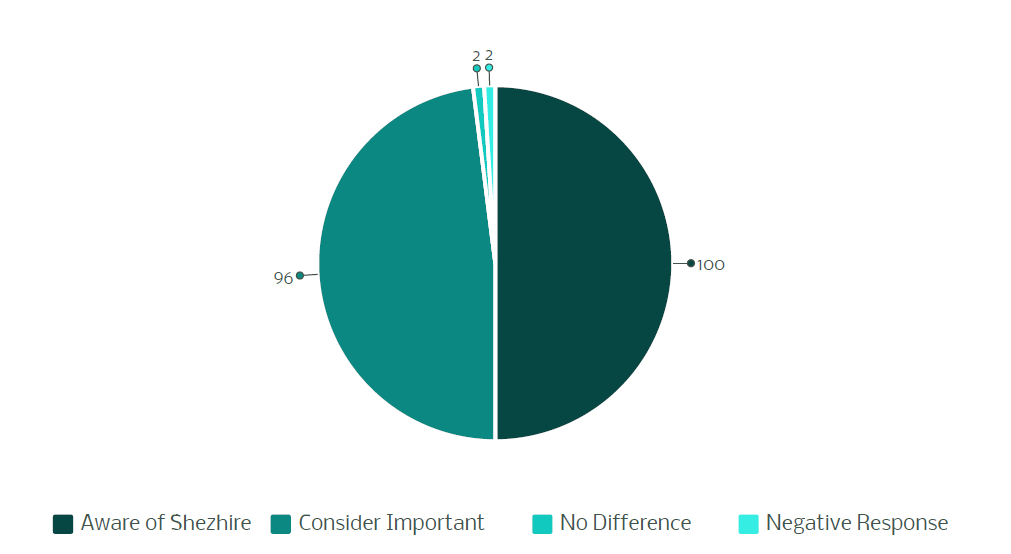
Figure 9. Awareness and Importance of Shezhire Among Respondents
100% of respondents were aware of Shezhire, regardless of region or age, highlighting its importance in Kazakh culture. 96% considered it an important cultural heritage, while 2% saw no difference and 2% responded negatively, underscoring its role in national identity (See Figure 9).
Shezhire’s use varies regionally: western and southern Kazakhstan employ it for education, social organization, and hierarchy (Guirkinger & Aldashev, 2016), while northern, central, and eastern regions primarily use it for transmitting family values and preserving family history.
Regarding modern applications, 46% of respondents saw Shezhire as a historical archive, 33% had not considered it, and 21% were unsure. For environmental aspects, after explanation, 52% understood its ecological application (e.g., tracking migrations, clan activities), but 48% remained unsure of its potential.
For sustainable development applications, 54% chose education, 38% ecology (Shakirova et al., 2023), and 8% social justice. Additionally, 77% supported including Shezhire in educational programs.
Concerning genetics, 93% were interested in their family’s genetic origins (7% relying on oral tradition). While 63% believed genetics could complement Shezhire, 32% were unsure. Finally, 82% supported using genetics to preserve cultural heritage, though 11% felt Shezhire already contains sufficient data.
Analysis of Survey Results
The survey confirmed Shezhire’s continued relevance in Kazakh society, with perception and application varying by region and age. Universal awareness (100%) underscores its central role in cultural identity, yet differing uses reflect the influence of urbanization and globalization. In southern and western regions, Shezhire is actively used as a social tool, while in northern and eastern areas, it primarily functions to preserve family memory, not extending beyond daily life (see Figure 10).
Application of Shezhire to sustainable development showed mixed responses. While 46% view it as a historical archive, its environmental problem-solving potential is largely underestimated. The emphasis on education (54%) highlights the need to integrate Shezhire into curricula. Low awareness (52%) of its environmental applications suggests a need for popularization. Developing environmental educational modules with Shezhire examples could significantly boost interest in traditional knowledge.
Regarding genetics, 93% of respondents are interested in their genetic origins, creating an opportunity to integrate genetics into Shezhire research. Combining genetic data with genealogies can help reconstruct historical migrations and clarify ethnic history, which 82% of participants confirmed as important for cultural heritage preservation.
Overall, the survey reveals Shezhire is a significant element of Kazakh culture, yet its potential for addressing modern challenges, particularly sustainable development and climate change adaptation, remains underestimated. While relevant across all age groups and regions, its application varies. The educational and genetic potentials hold the most interest, highlighting a need to popularize Shezhire’s ecological uses.
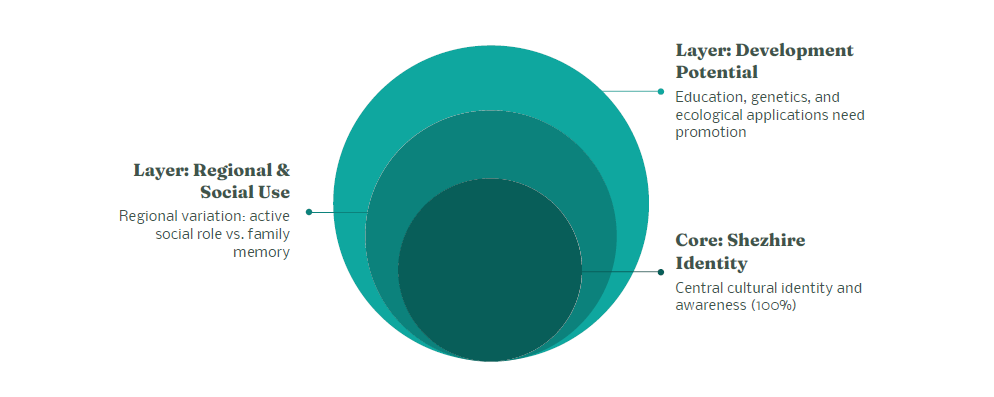
Figure 10. Shezhire’s Perception and Application in Modern Kazakh Society
DISCUSSION
Shezhire as a Path to Sustainable Development
Our exploration of the shezhire phenomenon within the framework of sustainable development has deepened our understanding of its versatility and enduring relevance as a cultural, ecological, and social instrument. This ancient system, which has safeguarded the identity of the Kazakh people for centuries, is now acquiring renewed significance as a foundation for addressing contemporary global challenges. Shezhire transcends mere genealogical records and historical accounts; it embodies a holistic worldview where nature, society, and culture are intrinsically interconnected. This perspective resonates remarkably with modern conceptualizations of sustainable development, a congruence further underscored by UNESCO’s recognition of traditional knowledge systems (UNESCO, 2024). Kazakhstan, with 14 elements inscribed on UNESCO’s Intangible Cultural Heritage lists, exemplifies the international acknowledgment of traditional practices’ value in navigating present-day issues.
Shezhire constitutes a rich repository of unique data concerning natural resource stewardship and time-tested adaptation strategies. An analysis of nomadic clan movements, historical pasture utilization (Ulambayar, 2023), and water conservation practices, as documented within shezhire, reveals profound ecological wisdom directly applicable to contemporary concerns such as desertification, land degradation, and climate change (Herrera, 2023; UNDP, 2024). These findings align with SDG 13 (Climate Action), by promoting traditional climate adaptation; SDG 15 (Life on Land), through its support for biodiversity-conscious land use; and SDG 4 (Quality Education), by advocating the integration of traditional environmental knowledge into educational frameworks (Jessen et al., 2022). The imperative to integrate traditional knowledge into climate action is increasingly supported by academic inquiry (Acharya & Prakash, 2025). Studies demonstrate that nomadic communities have cultivated sophisticated ecological ideologies, refined over centuries of human-nature coexistence, yielding documented successes in climate adaptation strategies (Tugjamba et al., 2023). Nevertheless, academic attention to these vital systems remains limited, with only 52 publications on Central Asian climate adaptation identified in recent systematic reviews (Saidaliyeva, 2024).
Fundamentally, shezhire is predicated on principles of social cohesion, mutual assistance, and justice, positioning it as an indispensable instrument for fostering social harmony and strengthening national identity. Amidst the forces of globalization and accelerating urbanization, shezhire serves as a vital bridge between the past and the present, preserving spiritual anchors and cultural heritage (Tezekbay & Tolessin, 2024). Its integration into educational curricula thus opens new avenues for interdisciplinary learning, synthesizing historical, ecological, and anthropological knowledge. This creates a robust platform for cultivating environmental consciousness and respect for traditions among younger generations.
As a universal paradigm of traditional knowledge, shezhire possesses the adaptability to be applied across diverse cultures and regions globally. This renders it a valuable asset for fostering international dialogue on intangible heritage preservation and leveraging traditional knowledge for sustainable development. Its global applicability is reinforced by UNESCO frameworks that affirm the essential role of traditional knowledge in achieving sustainability. Research underscores that ‘science and traditional knowledge not only can work together but also work better to build community resilience’, thereby validating shezhire’s potential contributions to international sustainability efforts. This study decisively confirms the central hypothesis: shezhire is not merely a historical artifact but a potent resource capable of advancing sustainable development goals. It functions as both an ecological and cultural archive, underpinning social sustainability, transmitting practices of harmonious environmental management, and shaping values for future generations.
The modern era demands innovative approaches to preserving traditions and integrating cultural heritage into global processes. Shezhire can form the bedrock for diverse fields of endeavor. In scientific research, its study unlocks new frontiers in genetics, anthropology, history, and climatology (Corbett, 2025). Notably, within sustainable development policy, the insights from shezhire can be seamlessly integrated into national strategies for ecosystem preservation and poverty alleviation, as well as into international cooperation initiatives. By serving as a model for other cultures, shezhire can significantly facilitate the global exchange of knowledge.
Ultimately, shezhire is far more than a mere chronicle of ancestors; it embodies a philosophy of sustainable development forged by centuries of symbiotic interaction among humans, nature, and society. It imparts lessons on land stewardship (Davaadalai et al., 2024), the importance of remembering one’s roots, and the imperative to build the future on principles of harmony and balance. In an age characterized by technological advancement and climate upheaval, this traditional knowledge holds profound practical value. Policymakers and educators can strategically integrate the study of shezhire into school and university curricula as a core component of cultural heritage and environmental education (SDG 4). Furthermore, digitizing and mapping historical migration routes and environmental data embedded within shezhire can inform the development of robust strategies for sustainable land use and biodiversity conservation (SDG 15). Engaging communities in climate change adaptation planning, utilizing shezhire to foster intergenerational dialogue on responsible resource management, presents another critical application (SDG 13). The urgency of this integration is starkly highlighted by the limited legal protections afforded to traditional knowledge systems in Central Asia, where most states currently lack specialized frameworks for safeguarding such heritage (Tegizbekova, 2018).
Thus, shezhire stands poised to become not only a vital cultural archive but also a highly effective instrument for realizing sustainable development goals in contemporary Kazakhstan (Olzhbaekova, 2025). It serves as a compelling reminder that the wisdom of the past remains acutely relevant, offering guidance to construct a future where tradition and innovation converge for the common good. Shezhire, in essence, is the resonant voice of ancestors, speaking to the present moment about the enduring path toward a sustainable future.
RECOMMENDATIONS
Based on the findings and discussion, several recommendations emerge for maximizing the potential of shezhire in contemporary sustainability discourse:
Educational Integration
Integrate shezhire into primary, secondary, and higher education curricula. At the primary level, focus on cultural heritage and moral education; at secondary and university levels, include it in history, anthropology, ecology, and sustainable development courses.
Digitization and Preservation
Digitize genealogical records and oral histories to create accessible archives. Develop interactive maps linking clan migrations, ecological zones, and oral traditions. Use digital platforms to connect shezhire knowledge with global research databases.
Policy and Environmental Application
Apply shezhire’s traditional pasture rotation and water management principles to modern land-use and conservation strategies (Shakirova et al., 2023). Utilize genealogical archives to reconstruct historical climate adaptation strategies for policymaking (Herrera, 2023). Incorporate shezhire insights into national sustainable development and climate adaptation planning.
Community Engagement
Strengthen intergenerational transmission of shezhire through cultural events, oral history projects, and local workshops. Involve elders, as custodians of genealogical memory, in sustainability education and community development programs. Foster regional cultural centers for communities to document and share genealogies.
Global Knowledge Exchange
Position shezhire within global indigenous knowledge dialogue under UNESCO frameworks. Encourage cross-cultural studies comparing shezhire with other indigenous genealogical and ecological traditions (Jessen et al., 2022). Develop partnerships with international researchers to integrate shezhire into global sustainability science.
Integrating shezhire into educational programs (primary/secondary: history, literature, ecology; university: cultural heritage, anthropology, sustainable development) is recommended. This preserves traditional knowledge, expands understanding, and shapes sustainable development values in future generations. However, this study has limitations: sample representativeness, reliance on self-reported data, and limited generalizability beyond Kazakhstan (Tezekbay & Tolessin, 2024). These factors require consideration during interpretation, and future research can address them via expanded datasets and comparative analysis in diverse cultural contexts.
LIMITATIONS AND FUTURE RESEARCH
This study has certain limitations, including the representativeness of the sample, reliance on self-reported data, and the generalizability of the results beyond Kazakhstan. Future research can address these through expanded datasets, probability sampling, and comparative analyses across Central Asian and global contexts.
CONCLUSION
This article has demonstrated that shezhire is not merely a genealogical record but a multifunctional cultural and ecological archive that continues to shape Kazakh identity, social organisation (Guirkinger & Aldashev, 2016), and adaptation strategies. Survey findings confirm its enduring significance, with universal awareness and strong recognition of its cultural and educational value (UNESCO, 2024). Though its ecological dimension is less widely appreciated, historical and anthropological evidence shows that shezhire encodes sophisticated knowledge of resource management, climate adaptation (Herrera, 2023), and genetic health.
In the modern context, shezhire aligns with the Sustainable Development Goals, particularly in education (SDG 4), climate action (SDG 13) (UNDP, 2024), biodiversity and land stewardship (SDG 15) (Ventresca Miller et al., 2020), and social equity (SDG 10). Integrating this traditional knowledge system into contemporary education, environmental policy, and global dialogues can help bridge past wisdom with future innovation (Acharya & Prakash, 2025).
The enduring lesson of shezhire is that sustainability is not a new invention but a lived philosophy embedded in cultural traditions. As the voice of ancestors, shezhire reminds us that harmony with nature and respect for community are foundations of resilience. Preserving and reinterpreting this wisdom is not only vital for Kazakhstan but also relevant to global conversations on sustainable futures. By treating shezhire as both heritage and resource, Kazakhstan can contribute uniquely to global sustainability science, demonstrating how cultural memory can guide humanity toward ecological balance and social justice. In this way, shezhire is not only a chronicle of the past but also a code for the future.
ACKNOWLEDGEMENT
We would like to express our sincere gratitude to everyone who supported us in writing this article. Special thanks go to our mentors and colleagues, whose valuable advice and critical comments helped shape the structure and content of this work. We also wish to acknowledge the contributions of scholars and researchers whose studies on shezhire and the traditions of the Kazakh people inspired us to undertake this research. We drew particular inspiration and motivation from the works of such distinguished authors as Ch. Valikhanov, A. Margulan, and other researchers of Central Asian history and culture. We are grateful to our family members and friends for their support, patience, and belief in our ideas. Their interest in this topic reminded us once again of the importance of preserving and studying the heritage of our ancestors. Finally, we would like to express our gratitude to the cultural centers and libraries that provided access to vital archival materials, which formed the basis of our research.
CONFLICTS OF INTEREST
The authors declare that there is no conflict of interest that could have influenced the conduct of the study, data analysis, or the conclusions presented in this article. The work was carried out solely for academic and research purposes, without funding, except for publication or influence from third-party organisations, institutions, or individuals. All sources used are properly cited, and the data presented are based on the authors’ independent research.
FUNDING
This project received funding from the 2024 Humboldt Residency Programme of the Alexander von Humboldt Foundation.
REFERENCES
Acharya, A., & Prakash, A. (2025). Integration of indigenous knowledge with scientific knowledge. Environmental Development, 45, 100852. https://doi.org/10.1016/j.envdev.2025.100852
Corbett, J. (2025). Indigenous knowledge and information technology for sustainable development. Information Technology for Development, 31(2), 245-267. https://doi.org/10.1080/02681102.2025.2472495
Davaadalai, J., et al. (2024). Future drought risk and adaptation of pastoralism in Eurasian rangelands. npj Climate and Atmospheric Science, 7, 89. https://doi.org/10.1038/s41612-024-00624-2
Genina, A. (2015). Claiming ancestral homelands: Mongolian Kazakh migration in Inner Asia [Doctoral dissertation, University of Michigan]. Deep Blue Repository.
Guirkinger, C., & Aldashev, G. (2016). Clans and ploughs: Traditional institutions and production decisions of Kazakhs under Russian colonial settlement. The Journal of Economic History, 76(1), 76-108. https://doi.org/10.1017/S0022050716000462
Herrera, R. (2023). Climate change adaptation forum proceedings. Asian Development Bank, Manila.
Jessen, T. D., et al. (2022). Contributions of Indigenous Knowledge to ecological and evolutionary understanding. Frontiers in Ecology and the Environment, 20(2), 93-101. https://doi.org/10.1002/fee.2435
Kaimuldinova, K., & Abdimanapov, B. (2014). Traditional environmental management of Kazakhs as the element of sustainability ethnic groups. World Applied Sciences Journal, 29(3), 383-387. https://doi.org/10.5829/idosi.wasj.2014.29.03.13863
Olzhbaekova, T. (2025, September 8). Kinship clans in modern Kazakhstan: Historical continuity and new realities. Times Central Asia. https://timesca.com/kinship-clans-in-modern-kazakhstan-historical-continuity-and-new-realities/f
Redvers, N., & Aubrey, P. (2023). Indigenous Peoples: Traditional knowledges, climate change, and health. PLOS Global Public Health, 3(10), e0002474. https://doi.org/10.1371/journal.pgph.0002474
Saidaliyeva, Z. (2024). Adaptation to climate change in the mountain regions of Central Asia. WIREs Climate Change, 15(5). https://doi.org/10.1002/wcc.891
Shakirova, N., Kaimuldinova, K., Shakirova, A., & Wendt, J. A. (2023). Traditional ecological knowledge of the Kazakh people as a prerequisite for education for sustainable development. Abai University Journal, 56(3), 1-15. https://doi.51889/2960-1649.2023.15.3.001
Senanayake, S. G. J. N. (2006). Indigenous knowledge as a key to sustainable development. Journal of Agricultural Sciences – Sri Lanka, 2(1), 87-94. https://doi.4038/jas.v2i1.8117
Tegizbekova, Z. (2018). Challenges of traditional knowledge protection in the Central Asian states: Perspective and experience of the Kyrgyz Republic. WTO Colloquium Papers, Chapter 8.
Tezekbay, Y., & Tolessin, A. (2024). The cultural landscape of Kazakhstan in the context of globalization. ResearchGate.
Tugjamba, N., Walkerden, G., & Miller, F. (2023). Adapting nomadic pastoralism to climate change. Climatic Change, 176(3). https://doi.org/10.1007/s10584-023-03509-0
Ulambayar, T. (2023). Rangelands and pastoralism in Central Asia and Mongolia: Challenges and perspectives. International Grassland Congress Proceedings, 24, 1-8.
UNDP. (2024). Indigenous knowledge is crucial in the fight against climate change. Climate Promise. https://climatepromise.undp.org/news-and-stories/indigenous-knowledge-crucial-fight-against-climate-change-heres-why
UNESCO. (2014). Traditional knowledge and skills in making Kyrgyz and Kazakh yurts (Turkic nomadic dwellings). UNESCO Intangible Cultural Heritage Lists. https://ich.unesco.org/en/RL/traditional-knowledge-and-skills-in-making-kyrgyz-and-kazakh-yurts-turkic-nomadic-dwellings-00998
UNESCO. (2024). Kazakhstan – UNESCO Intangible Cultural Heritage. https://ich.unesco.org/en/state/kazakhstan-KZ
Ventresca Miller, A. R., et al. (2020). Ecosystem engineering among ancient pastoralists in northern Central Asia. Frontiers in Earth Science, 8, 168. https://doi.org/10.3389/feart.2020.00168
Wikipedia contributors. (2025, July 27). Jeti ata. Wikipedia. https://en.wikipedia.org/wiki/Jeti_ata
ABOUT THE AUTHOR(S)

Sadvokassova Akbota
sadvokassova.akbota@gmail.com
Sadvokassova Akbota is a graduate student in Applied Biotechnology at Tor Vergata University of Rome and an alumna of Eurasian National University. Her research focuses on ultrasound’s effect on flocculation kinetics (EPS production, gene expression), with interests in microbial productivity, bioprocess optimization, and gene regulation. As a Kazakh, she integrates traditional knowledge, specifically “Shezhire: as Code for Sustainability,” to unite scientific innovation with cultural insight for sustainable development, and has presented at international conferences.

Taursynbay Aspan
Taursynbay Aspan is a Kazakh researcher at Maqsut Narikbayev University, Astana, specializing in Economics and Data Analysis. He applies AI and statistical methods to sustainable development, focusing on “shezhire”—a traditional Kazakh genealogical system preserving ancestral knowledge and values, which he deems a “sustainability code.” His research bridges innovation and tradition, uniting cultural heritage and modern science to address global challenges.
Received: July 16, 2025
Accepted: September 9, 2025
Published: October 31, 2025
Citation: Sadvokassova, A., & Aspan, T. (2025). Shezhire as a code of sustainability: Traditional Kazakh wisdom for sustainable futures. SustainE, 3(1), 59–88. In A. Akinsemolu, A. Eimer, & S. Iqbal (Eds.), Bridging power and knowledge: Addressing global imbalances in knowledge systems for sustainable futures [Special issue]. https://doi/10.55366/suse.v3i1.4
Disclaimer: The opinions and statements expressed in this article are the author(s) sole responsibility and do not necessarily reflect the viewpoints of their affiliated organizations, the publisher, the hosted journal, the editors, or the reviewers. Furthermore, any product evaluated in this article or claims made by its manufacturer are not guaranteed or endorsed by the publisher.

Distributed under Creative Commons CC-BY 4.0










